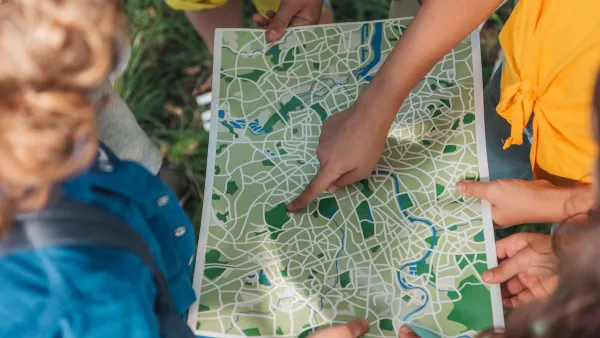Journalists at the Center for Investigative Reporting undertook the herculean task of mapping the extent of the secretive and sometimes strange fence between the United States and Mexico.
Michael Corey writes of his experience attempting to obtain information about the exact extent of the series of fences that makes up the infamous U.S.-Mexico border fence. The project grew out of the Borderland storytelling project that the Center for Investigative Reporting undertook with NPR.
“Journalists at CIR have been trying for more than three years to obtain accurate, detailed mapping data showing the location of the border fence system. The fences – it's more accurate to say there are many – have cost taxpayers many millions of dollars and are key pieces of border security infrastructure. They're also a potent symbol that chafes at our Mexican neighbors.”
The task of finding the data proved more difficult than expected. “We filed several Freedom of Information Act requests with U.S. Customs and Border Protection, and after several appeals, we received limited data showing where individual fence segments start and end. But we were told repeatedly that the actual lines showing the details of the fence segments were sensitive law enforcement information that could give away secrets to drug cartels, illegal border crossers or terrorists.”
Through no small amount of perseverance, and old-fashioned, gum shoe Google Earth exploration, Corey states what his team has achieved: “The result: We now have what is – as far as we know – the most complete and detailed map of the border fence system that is publicly available.” The map is in OpenStreetMap, and the article also has Google Earth images showing how difficult the fence is to track across the terrain of the American Southwest.
FULL STORY: The surprising tools CIR used to map the US-Mexico border fence

Analysis: Cybertruck Fatality Rate Far Exceeds That of Ford Pinto
The Tesla Cybertruck was recalled seven times last year.

National Parks Layoffs Will Cause Communities to Lose Billions
Thousands of essential park workers were laid off this week, just before the busy spring break season.

Retro-silient?: America’s First “Eco-burb,” The Woodlands Turns 50
A master-planned community north of Houston offers lessons on green infrastructure and resilient design, but falls short of its founder’s lofty affordability and walkability goals.

Test News Post 1
This is a summary

Analysis: Cybertruck Fatality Rate Far Exceeds That of Ford Pinto
The Tesla Cybertruck was recalled seven times last year.

Test News Headline 46
Test for the image on the front page.
Urban Design for Planners 1: Software Tools
This six-course series explores essential urban design concepts using open source software and equips planners with the tools they need to participate fully in the urban design process.
Planning for Universal Design
Learn the tools for implementing Universal Design in planning regulations.
EMC Planning Group, Inc.
Planetizen
Planetizen
Mpact (formerly Rail~Volution)
Great Falls Development Authority, Inc.
HUDs Office of Policy Development and Research
NYU Wagner Graduate School of Public Service



























